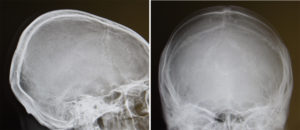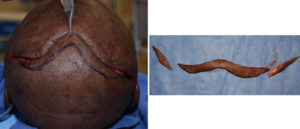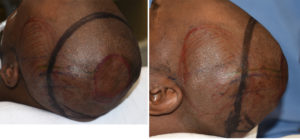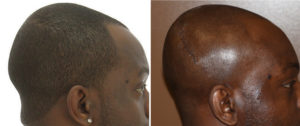Background: The shape of the skull can be highly variable. It can have many presentations due to growth and the influences of external pressures in utero as well as after birth. Most of the time skull shape anomalies do not have much difference in the thickness of the bone. The head shape may be unusual but it is not due to bony overgrowth or excessive thickness of the skull bone.
But in some skull shape abnormalities the bone is actually thicker than normal. This is often seen in occipital protrusions. The back of the head may stick out and one reason is that the bone is thicker. Whether this is seen in smaller occipital knobs or larger occipital protrusions, the bone thickness is increased. This can be seen in plain side view x-rays.
Occipital reduction is one of the most commonly requested and performed skull reductive procedures. Burring of the outer table down to the diploic space can yield very visible external changes. The amount of reduction will depend on the thickness of the bone but can be up to 7 to 8mms or more in some cases.



Occipital skull reduction can be successfully and safely performed to make a visible aesthetic change. Surgical access is the key and how small or big the incision is will have an influence as to how much skull reduction can be done.
Highlights:
1) Occipital skull reduction can be done for large skull protrusions provided the bone is thick enough to do so.
2) Removal of the outer table of the skull is the limit of how much the skull can be safely reduced in size for any area.
3) The occipital region can be reduced the most of any skull area as it is the thickest particularly near the its base.
Dr. Barry Eppley
Indianapolis, Indiana





